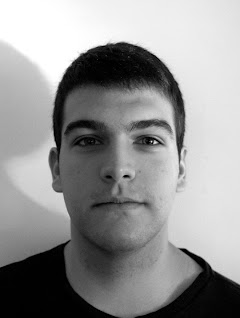Beat
Cultural or social issues
One Shot

“I like this image because it was one of those moments where everything just fell into place. As soon as I entered Rodney and Gladys' small log cabin and saw them sitting as they are in the photograph, I thought "this is too perfect, I have my shot right here." You can tell that they live the dairy farmer life, Rodney's boots, the cow lamp on the table. And not only that, but they both seem so comfortable and at ease with how they are living. I think that their true selves shine through.”
Profile
My earliest memory of photography is of my aunt posing everyone together for family pictures at holiday dinners.
I started taking pictures on my dad’s iPhone and would walk around the yard taking pictures of flowers and nature in general. I got a small DSLR for my birthday that year and taught myself how to use it. I just went from there, teaching myself techniques, basic composition, and learned a lot from looking at other photographers’ work on Instagram.
My desire to become a professional photographer started with National Geographic magazine. I was amazed by the places these photographers were going to and I was equally amazed by the images they took. I wanted to be one of those photographers travelling to places all over the world to take photographs.
My first assignment was for a local newspaper during my senior year of high school in my hometown of Cumberland, Rhode Island. They wanted me to photograph some end-of-the-year celebrations that were happening at school. I was excited to work and see my images in print for the first time.
The assignment that left the biggest mark on me was an independent project in Gyumri, Armenia, in 2016. It was my first story, and I really found my photographic voice while working on it. I spent a lot of time with families who, despite the hardship they endured, were kind enough to not only open their doors to me and share their stories but allowed me to photograph them. I was, and still am, amazed by the generosity of those who had so little.
I get really excited about assignments that allow me to connect with people and tell stories that wouldn’t be brought to light otherwise.
Photojournalism is important because visual media transcends language. A photograph can say more than words ever could. It’s one thing to hear about an issue, but seeing it as it happens can be much more powerful.
The biggest lesson is that sometimes you have to put down your camera and approach your subjects as a person first, a fellow human - then as a photographer. You have to make yourself equally vulnerable as the subject in front of your lens.
The people I respect the most are those who have a goal, and they work relentlessly towards it. The people who have the courage to put themselves out there and let their voices be heard regardless of the consequences.
There will always be a place for photojournalism, we just have to adapt to the changes happening around us and with the rise of social media we have the ability to witness events as they unfold. That’s why it is so important to have professional photographers stationed all over the world who can cover a story at the drop of a hat. There is a greater need for photojournalists now than ever before.
Behind the Scenes

